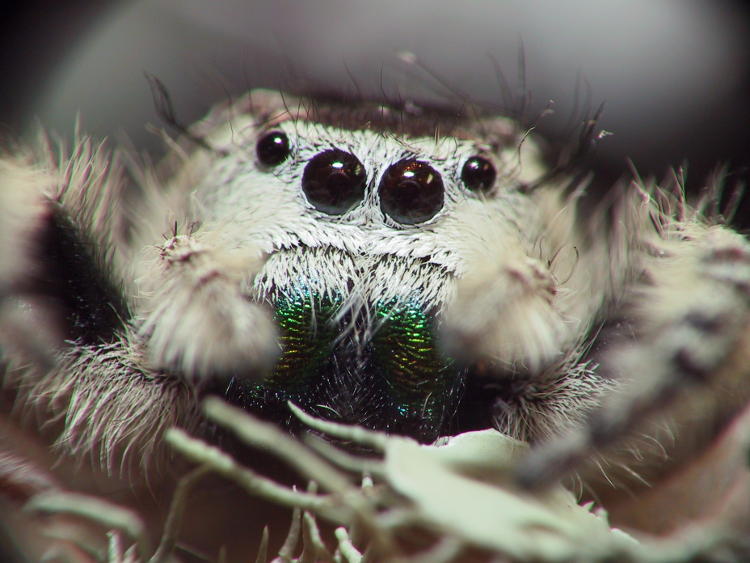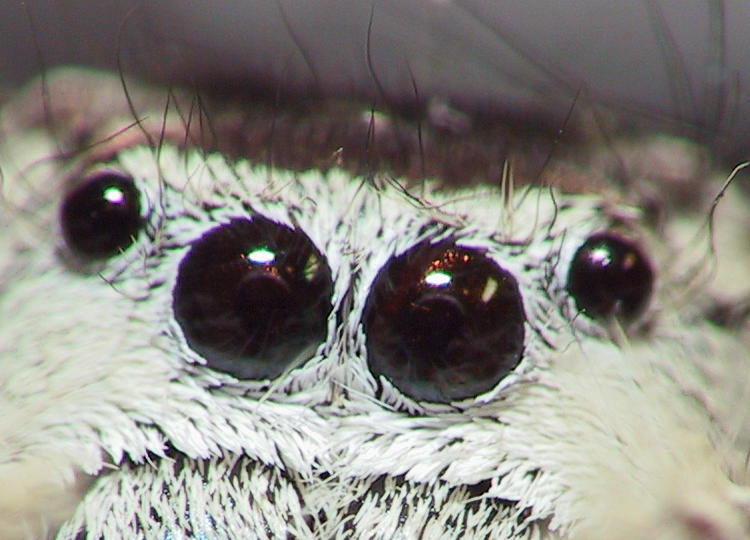
This one comes from fourteen years ago in 2006, with the Canon Pro-90 IS camera and a reversed Olympus 50mm f1.4 attached to the front for extreme magnification – this is what produced the circular vignetting seen in the corners of the frame. My subject here is a common jumping spider in these parts, most likely Phidippus otiosus, and is quite dead, but this allowed me to do closeups that required a very specific distance without having to worry about a hyperactive subject wandering off, or attacking me viciously, or trying to use the camera itself. The brilliant iridescence of those chelicerae is of course one of the details that I was after. However, there’s another detail that was produced by accident and is a little misleading in itself. For this, we’ll have to go in a bit closer still.

The primary eyes (or ‘anterior median’ in spider talk, front and center in people talk) appear to actually have pupils and perhaps a metallic brown iris, but they don’t. While these eyes are indeed complex, with the ability to focus (unlike compound eyes,) they have no pupil or iris; the effect is provided by the reflection of the metal mounting plate of the Olympus lens, looming so close to the eyes – you can see it in slightly more detail here. The metallic brown color likely is from the eyes, though – in my experience, the cornea tends to turn this color in dead spiders, or perhaps its the optical fluid within. In living jumping spiders, those eyes have a blue-green hue when it can be seen at all.
“So why are spiders so hairy?” you ask, but in vain, because I’m keeping mum about that – it’s that, or admit that I don’t know and could only speculate that it’s either to help ward off parasites or repel rain, and I’m not about to do that. Frustrated, you try again and ask about the bright green chelicerae, and there, I have an answer, even if it’s someone else’s. Apparently, it assists them with hunting by reflecting light in the wavelengths that the spider is most sensitive to, a bit like those circular reflectors that doctors in old movies and cartoons always wore on their heads just to indicate that they were doctors but that no one ever sees now and never knew what they were for even when they did – that was pronoun hell but I bet you still followed it. Curiously, some spiders, even within the same species, have different colors to their chelicerae, so presumably they either have different eyes or are targeting different prey (or perhaps at different times, like when UV is stronger or weaker.) Anyway, it’s for hunting – just leave it at that. Shit, if I was a scientist I’d have so many different research projects going right now just to answer stuff that comes up on the blog…




















































